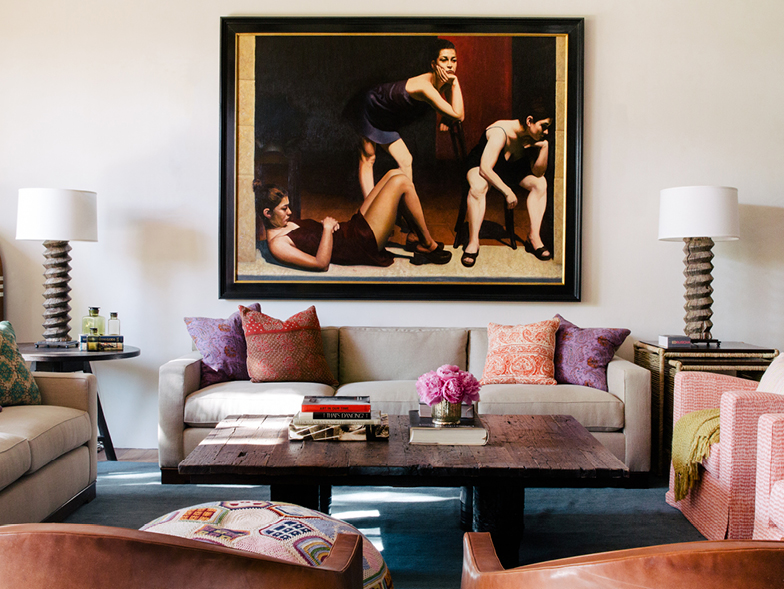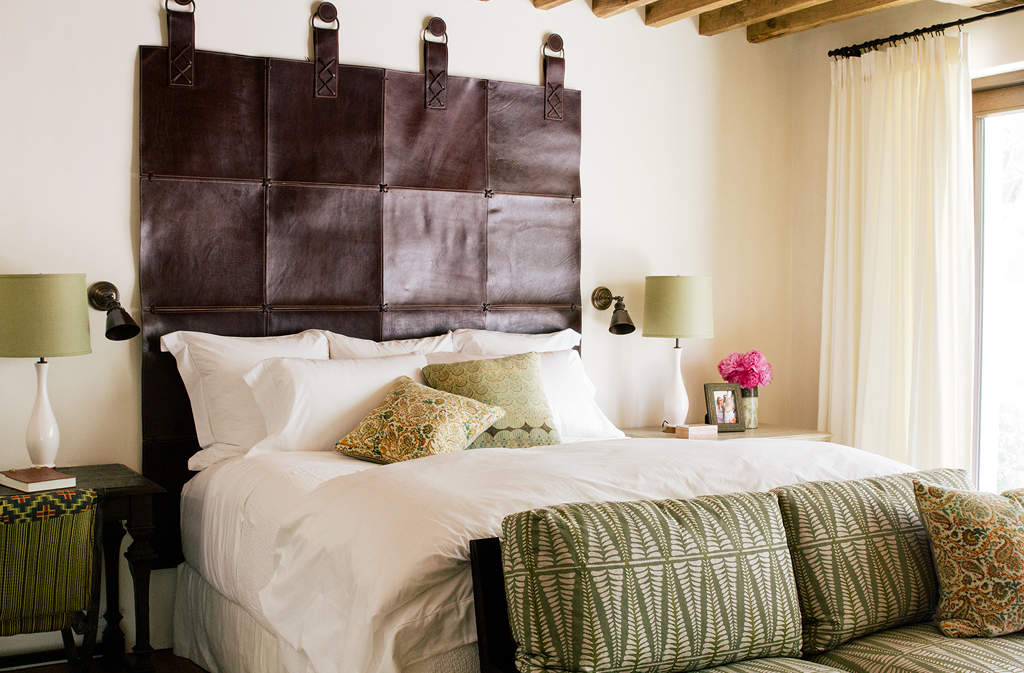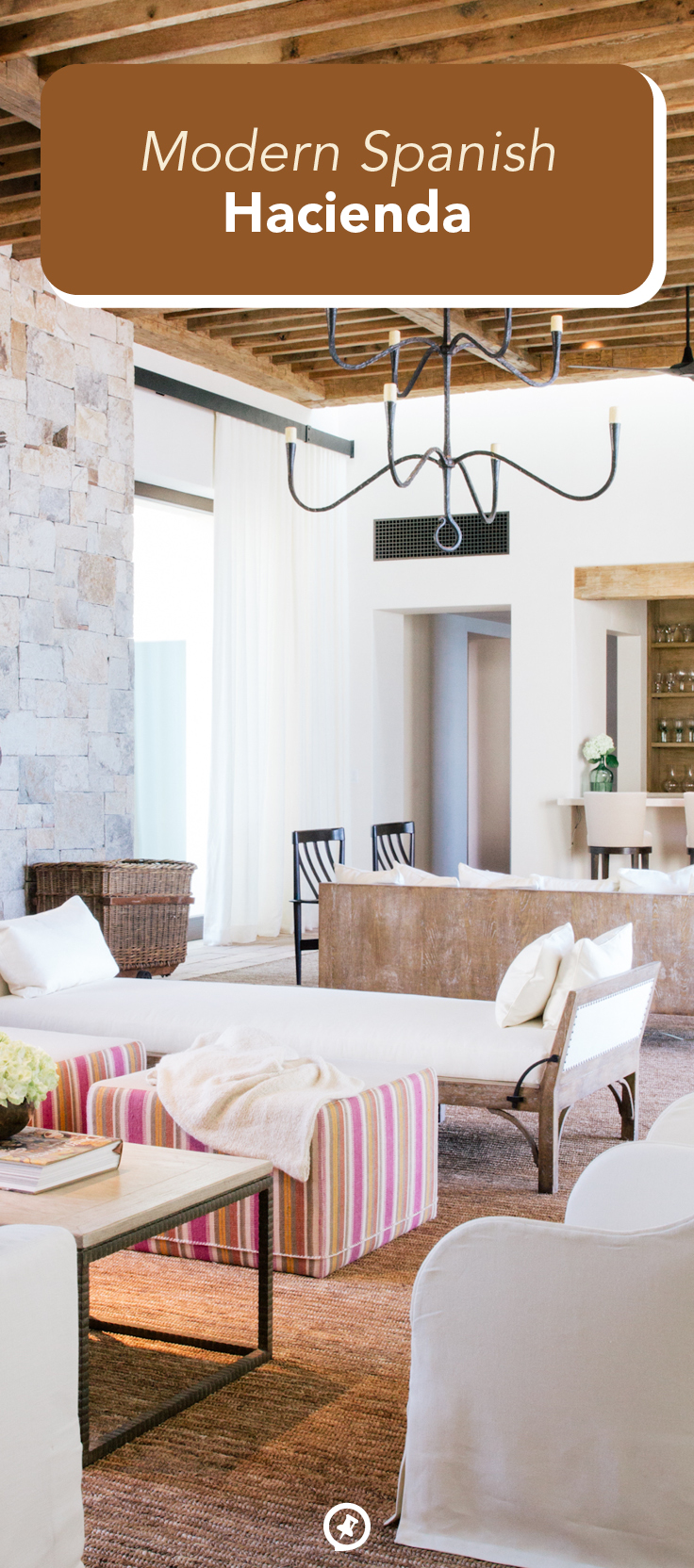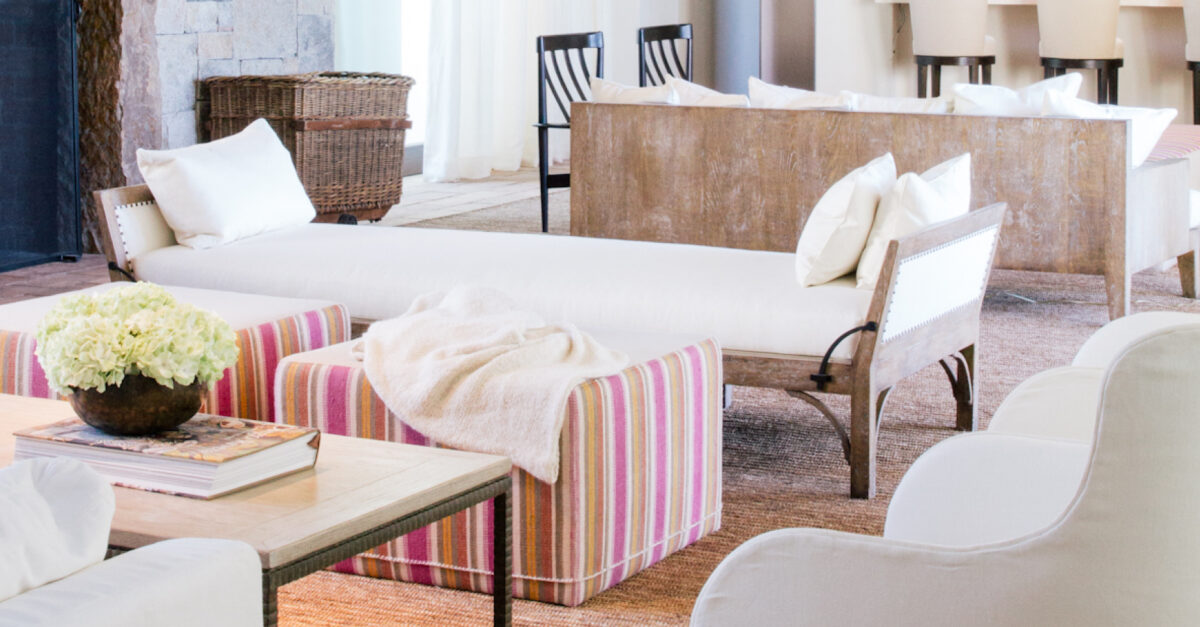A Modern Spanish Hacienda
Interview with Chris Barrett
Photography by Jessica Comingore
Chris Barrett is a Southern California designer known for her unique mix of modern and vintage-inspired interiors. Here Barrett shares the inspiration behind her El Dorado project, a Spanish-style villa in Baja California.

Tell us a little about yourself. Did you always want to be an interior designer?
I grew up in Los Angeles and, by my mid-twenties, was working on my acting career. However, once I had children, it became clear to me that I needed more financial stability. It was at this point in the late 1980s that I decided to go to design school, and I have been designing ever since.
Who influenced you as a designer?
I feel very fortunate for the experience I have acquired over the years and for those who inspired my work, including Andrée Putman and Kerry Joyce. Both designers embraced simplicity while creating sophisticated, stylish designs. Their fusion of old-world style with interesting furniture, textures, and materials has influenced the ways I have approached my work.
How do you generally start a project with a client?
First and foremost, to successfully work with a client, I always find out what styles, colors, textures, and designs they prefer and if they have a vision for the project. I try to determine if they’re looking for a fresh, updated look or a more traditional decor. I like to also find out if there are certain pieces they want to reuse, if they are open to reupholstery, and if they’re interested in purchasing new furniture. I also try to get a sense of their lifestyle, which is vital to crafting a space that is both functional and comfortable.
How do you effectively meld fabrics, colors, and decor to create the desired space?
Textiles convey what you are trying to achieve in terms of the feeling of a room. They can evoke a huge range of feelings—warm and cozy, airy and bright, lively and glamorous, and welcoming. If my goal is to create a peaceful space, I select cooler colors like blue-gray or beige. I use a more monotone palette by incorporating different textures in the same or similar color. If the function is more family oriented, I try to use performance fabrics. If the owner does formal entertaining, I lean toward velvets and mohair with mixed prints. I almost always use draperies to soften spaces because it adds color and interest, but, for me, what textiles do is create a comfortable feeling, which I believe is most important.

What was your approach and vision for the El Dorado project?
This project took two-plus years to build, and I was so pleased to have been part of the effort. Because I have a passion for starting projects from scratch, this endeavor enabled me to incorporate all the styles I love to work with—a variety of textures, bold and neutral color palettes, and a mixture of wood finishes to give each space its own special feel. My vision here was to construct a retreat-like space by integrating both indoor and outdoor living spaces.
Did the architecture of this home inspire your design approach?
In my opinion, the architecture of a home is the most important element when designing a room. I take a lot of my design cues from the architecture as I prepare and plan the blueprint for the furniture layout. I apply the basic concept of creating a well-appointed space—practical, useful, and welcoming.
What is the common thread for your design approach, and how did you include that with this project?
As with all my designs, my goal was to create diverse spaces by including a variety of textures, colors, and wood finishes. For El Dorado, during the early stages of this design process, I began by selecting the rugs and their colors, followed by the fabrics, furnishings, and textiles.
As for the bedrooms, I approached them differently than the other rooms by establishing them by color first and adding the decor afterward. Also, I generally like to focus on a few key pieces that make a statement and will then layer with additional items as I move through the design process. I always want to make sure the room looks collected rather than decorated.

The furniture you selected is beautiful. How did you decide what pieces to add?
Well, most of the time I include some vintage pieces to complete a more dramatic, interesting space. By using different textures, I can create an elegant, sophisticated look. Also, because I don’t like to use the same-colored wood finishes, my goal is to create balance by mixing things up. For this home, I used several pieces of darker-stained furniture that I sprinkled throughout while adding midcentury Scandinavian accent pieces. I also did some furniture shopping in Mexico so I could incorporate some authentic Mexican decor into the overall character of the home.
What were your favorite rooms to decorate for this project?
Hands down, the kitchen and great room. As far as the kitchen goes, I always relish the challenge of never doing the same kitchen twice. So my goal here was to work with the home’s architecture and layout. To enhance its beauty, I combined a mixture of textures and textiles with bold wall tiles and flooring. I also incorporated neutral wall colors and cabinetry with added vintage shelving to round out the room’s appeal.
Since I was able to create the great room from ground zero, it gave me tremendous satisfaction to conceptualize it from the get-go—it’s like putting puzzle pieces together and then seeing it come to life. The great room overlooks the ocean, so I wanted to make sure it had clean lines with a balance of colors and textures. I accomplished this by utilizing rift white oak, neutral color furniture, and a splash of bold colors for a finished, vibrant look.
What are your preferred color palettes, and how did you incorporate them into this project?
Rich, dark greens, neutrals, and black are my favorite colors to work with, and I sparingly supplement jewel tones to complete the overall look. At El Dorado, I integrated these colors into a variety of rooms, such as the kitchen, bathrooms, and outdoor spaces.
For more info, visit chrisbarrettdesign.com






















